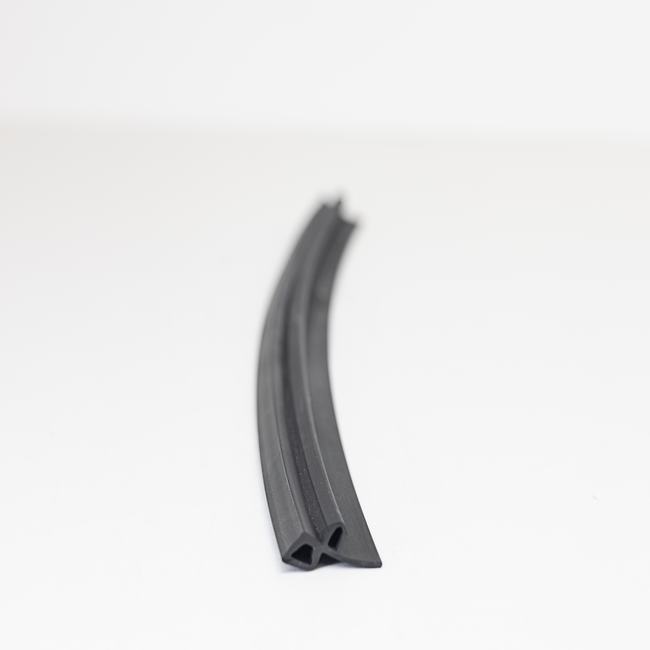Dilatation seals, often referred to as expansion joints, are crucial components in various engineering and construction applications that involve structures subjected to thermal, mechanical, or other forms of stress-induced movement. These seals play a vital role in accommodating and mitigating the effects of such movements, which can otherwise lead to structural damage, leaks, and operational issues.
Here’s a more detailed and lengthy description of dilatation seals:
Definition and Purpose:
Dilatation seals are flexible, engineered devices designed to facilitate movement and flexibility in structures and systems where rigid connections would be impractical or detrimental. Their primary purpose is to accommodate the expansion, contraction, or deflection that occurs in structures due to temperature variations, settlement, seismic activity, or other dynamic forces. These seals help prevent the transmission of these movements to adjacent components or structures, thereby preserving the integrity and functionality of the overall system.
Types of Dilatation Seals:
There are several types of dilatation seals, each tailored to specific applications:
- Expansion Joints: These are used to absorb thermal expansion or contraction in structures, such as bridges, buildings, pipelines, and industrial machinery. They typically consist of a combination of metal, rubber, or fabric elements that allow for movement while maintaining a barrier against the ingress of environmental elements.
- Pipe Expansion Joints: These are specialized dilatation seals used in piping systems to absorb movements, vibrations, and noise. They are commonly found in power plants, HVAC systems, and industrial piping.
- Rubber Seals: Rubber dilatation seals are often employed in road construction and building projects to bridge gaps and accommodate movement between different parts of a structure.
- Modular Expansion Joints: These are used in bridges and elevated structures to provide a flexible link between segments, allowing for both longitudinal and transverse movement while ensuring structural stability.
- Metal Bellows Expansion Joints: These are utilized in high-temperature and high-pressure applications where resistance to corrosion and extreme conditions is essential. They are commonly found in chemical plants and petrochemical facilities.
Design and Construction:
Dilatation seals are typically designed with a combination of materials that can endure the specific environmental conditions and movement requirements of the application. These materials may include rubber, neoprene, elastomers, metal, fabric, or a combination of these. The design also considers factors such as pressure, temperature, chemical exposure, and structural loads. Proper reinforcement, anchoring, and attachment methods are essential to ensure the effectiveness and longevity of the seal.
Installation and Maintenance:
The correct installation of dilatation seals is critical to their performance. The seals must be precisely positioned and securely fastened to prevent unwanted movements. Regular inspection and maintenance are also essential to ensure the continued functionality of the seals. This includes checking for wear and tear, damage, or degradation of the materials, and replacing or repairing them as needed.
Applications:
Dilatation seals are used in a wide range of applications, including:
- Infrastructure: Bridges, tunnels, roads, and railroads use expansion joints to accommodate the thermal expansion and contraction of materials and the dynamic forces experienced by these structures.
- Buildings: Commercial and residential structures incorporate dilatation seals to manage movement between different sections, floors, and building components.
- Industrial Facilities: Chemical plants, power plants, and manufacturing facilities use dilatation seals in piping systems and equipment to absorb vibrations, noise, and movement.
- Transportation: Vehicles, such as automobiles, aircraft, and trains, employ dilatation seals in their components to allow for movement while maintaining structural integrity.
- Marine and Offshore: Ships, offshore platforms, and underwater pipelines utilize expansion joints to handle the dynamic conditions of the marine environment.
Benefits:
Dilatation seals offer numerous advantages, including:
- Protection against structural damage caused by thermal expansion and contraction.
- Reduction of noise and vibrations in various applications.
- Prevention of fluid or gas leakage in piping systems.
- Preservation of the integrity and durability of structures and systems.
- Enhanced safety by accommodating movements in critical infrastructure components.
In summary, dilatation seals are indispensable components in engineering and construction, serving to manage and accommodate the dynamic movements and forces that structures and systems encounter. Their design, materials, and installation are tailored to the specific demands of each application, ensuring the longevity and functionality of the overall system while minimizing the risks of damage or failure.


